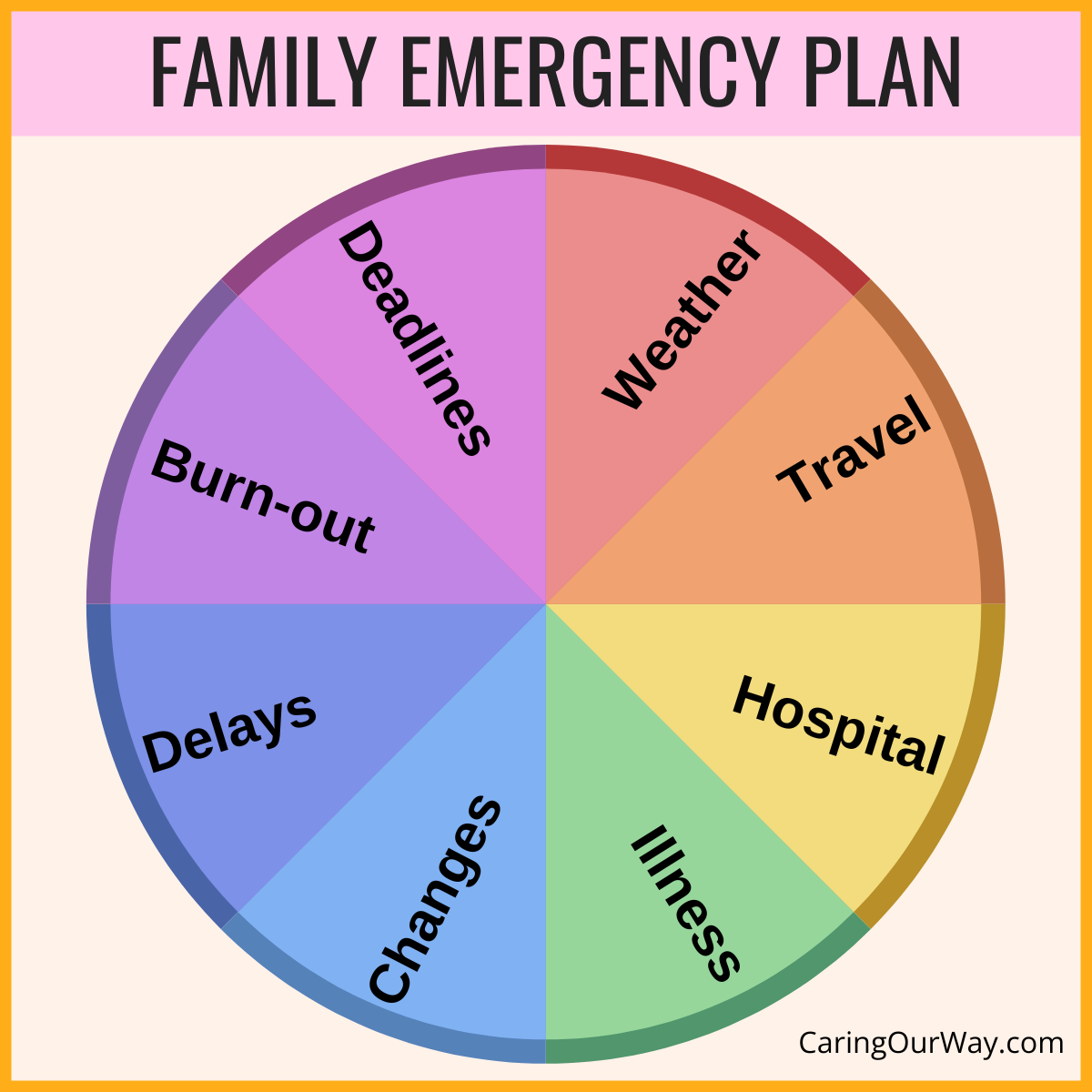“Every worry needs a plan. We can name our worry around “Who’s my backup?, or “What do I do in case of an emergency?”, and then we can really start thinking through “What’s our plan for this?”” — Denise Brown, Founder, Caring Our Way Community
When you’re caring for a family member with Alzheimer’s or another type of dementia, worries can keep you up at night — but they don’t help you. Through our conversation with Denise Brown, we’ve learned having a solid emergency plan helps calm your worries, reduce your fears, and provide you with peace of mind.
Here’s your guide to creating your own specific family emergency plan.
Understand the Need for Emergency Planning
“A striking 74% of caregivers report having no backup plan in place (1).” Denise Brown
Unfortunately, many caregivers believe they must handle everything alone, or they don’t know where to find alternatives. This isolation can definitely increase stress and worry. With proper planning and support, caregivers build their network of resources and feel more confident in their ability to handle emergencies.
Here are four essential steps to create an effective family emergency plan.
Tip 1: Name Your Worry
The first step in creating your emergency plan is identifying your specific concerns. Denise’s Family Emergency Plan begins with eight categories of common caregiver worries. Your plan will be specific to your unique needs. Here is one example of eight categories:
- Delays
- Changes
- Illness
- Hospital
- Travel
- Weather
- Deadlines
- Burnout.
Nancy’s Experience:
While creating an emergency plan for my father-in-law with Alzheimer’s, I focused on hospitalization scenarios for him. However, when my mother-in-law unexpectedly needed hospitalization, I realized I hadn’t planned for this possibility! This experience highlighted the importance of considering multiple scenarios when developing emergency plans.
Tip 2: Develop Your Plan
Once you’ve identified your concerns, it’s time to create actionable plans. Remember that plans can take many forms:
- Written instructions
- Maps or diagrams
- Medication lists
- Contact information
- Behavior management strategies
- Transportation arrangements
- Key points for plan development: Think creatively and “outside the box”
- Treat new solutions as experiments
- Track what works and what doesn’t
- Be flexible in adjusting approaches
- Consider both short-term and long-term scenarios.
Sue’s Experience:
Due to an experience I had, I recognized the importance of planning for my own potential health emergencies. One of the important components of the family care plan I created for me was, in addition to registering my care receivers with emergency services, I also registered myself. This ensured emergency services knew who to call for me AND that I am a caregiver for loved ones, so they knew the person who they contacted for me would also contact the people on the list to care for my care receiver.
Tip 3: Communicate Your Plan
Effective communication ensures everyone involved understands their role. Make sure everyone included in the plan chooses the communication method(s) most effective for them. Consider multiple methods of sharing information. For example:
- Written letters
- Emails
- Shared online documents
- In-person meetings
- Virtual meeting platforms like Zoom
- Physical copies in accessible locations
- Regular updates and reminders.
Denise’s Experience:
One of the caregivers I worked with shared her powerful story of how she communicated with her neighbors after her husband’s dementia diagnosis. She wrote letters to her neighbors explaining their situation. She included specific requests for help, such as checking in with her before going on grocery trips in case she needed something. This approach allowed neighbors to process the information privately, know specific ways to help, and resulted in strong community support.
Nancy’s Implementation:
Here are the ways I communicated our care plans:
- Created a shared Google Drive for family members
- Maintained physical copies in purple folders at key locations
- Regularly reviewed and updated contact information
- Ensured all involved parties had appropriate access.
Tip 4: Update Your Plan Regularly
It’s important for emergency plans to evolve as circumstances change. Watch for these common triggers that signal the need for updates:
- Changes in your care recipient’s condition
- New diagnoses or medications
- Shifts in your own availability
- Family member changes
- Service provider updates
- Transitions to palliative or hospice care.
Sue’s Approach:
I scheduled bi-monthly plan reviews and updates on my calendar. This regular maintenance included:
- Reviewing all content
- Sending updates to involved parties
- Confirming continued availability of helpers
- Adjusting roles and responsibilities as needed.
When creating your emergency plan:
- Consider multiple scenarios
- Include backup options
- Document important information
- Keep contact lists current
- Maintain flexibility
- Store copies in multiple locations
- Conduct regular review and updates.
About Our Guest Expert
Denise Brown founded the Caring Our Way community to support family caregivers. The community offers a wide variety of valuable, free resources, including:
- Monthly planning sessions
- Family Care Manager course
- Downloadable Family Emergency Plan template
- Online support spaces
- Access to certified caregiving consultants.
You can find these resources at caringourway.com.
Final Thoughts
Creating your family emergency plan isn’t just about documenting procedures — it’s about peace of mind for you and your family members. While it may seem overwhelming at first, know you don’t have to do it alone. Resources and support are available at caringourway.com to help you create the plan that addresses the specific needs for you, your team, and your care receiver.
Key takeaways:
- Start by naming your specific worries
- Create detailed, practical plans
- Communicate clearly with all involved parties
- Update regularly as circumstances change
- Take advantage of available resources and support.
If you have tips about supporting a parent who’s becoming a primary caregiver, please share them on our Facebook page or Instagram page.
We’re all on this journey together.
(1) Denise discovered this statistic through her comprehensive research of family caregivers. (Source: The Caregiving Years Training Academy)






Join the community